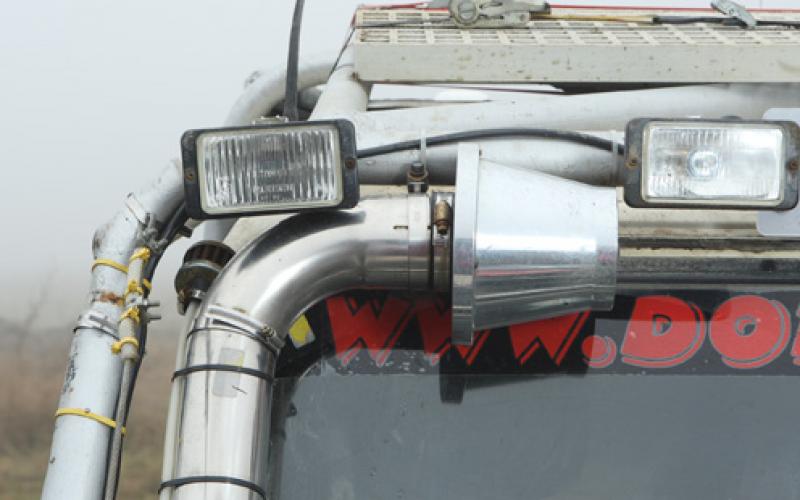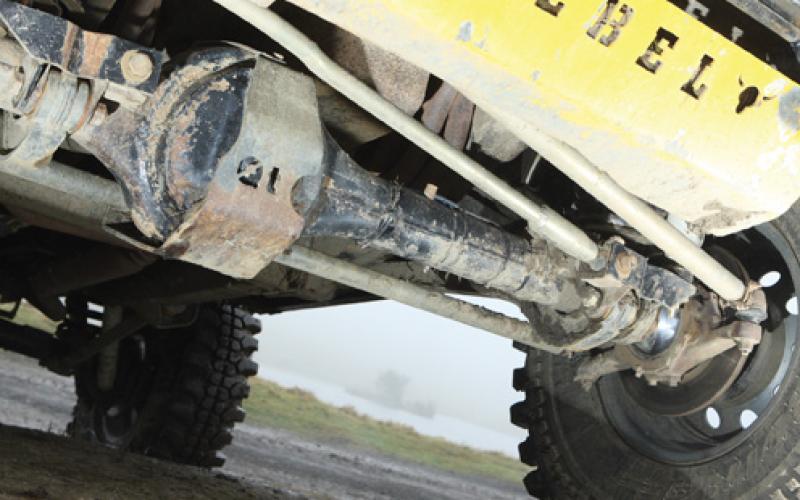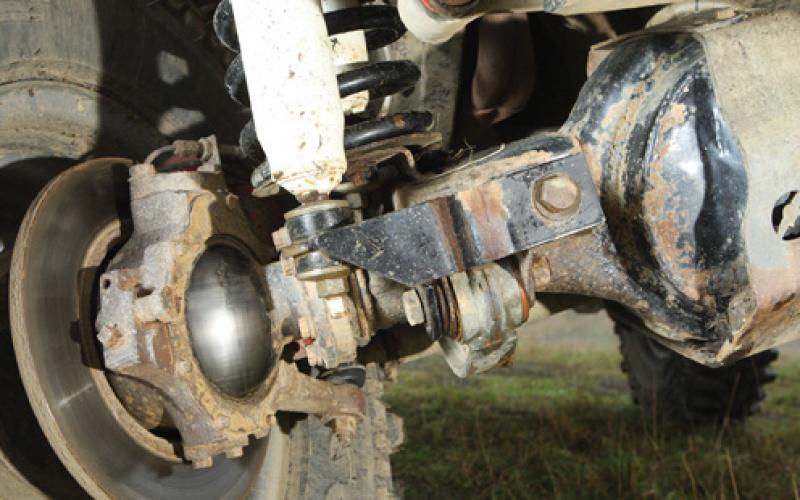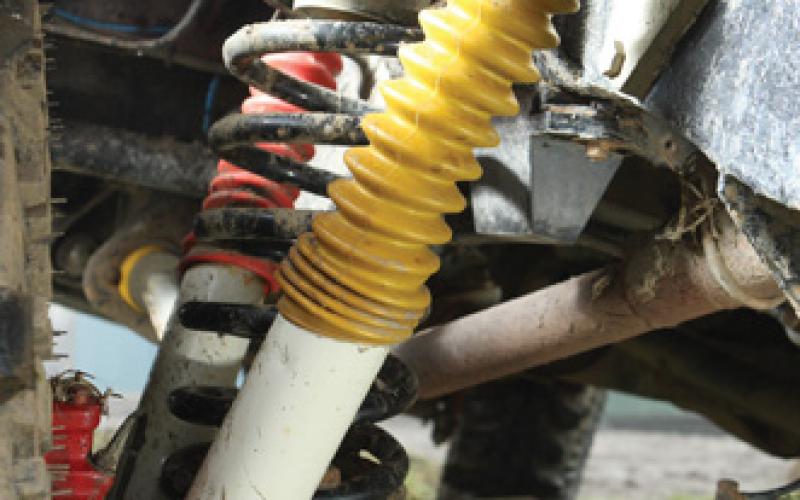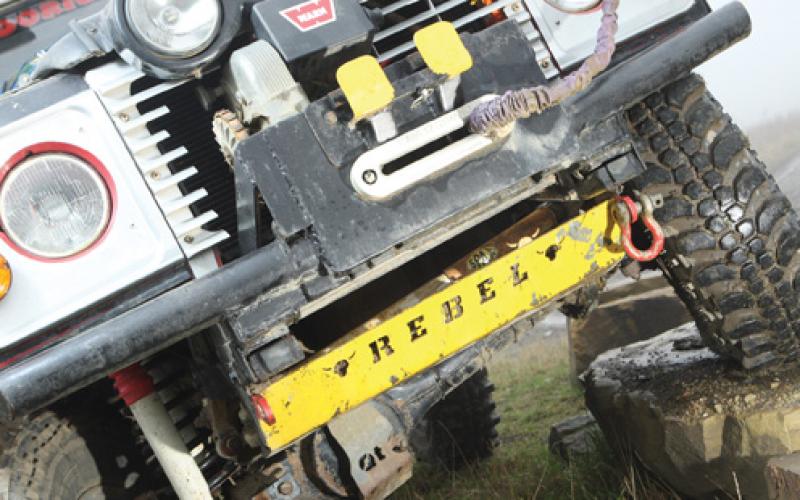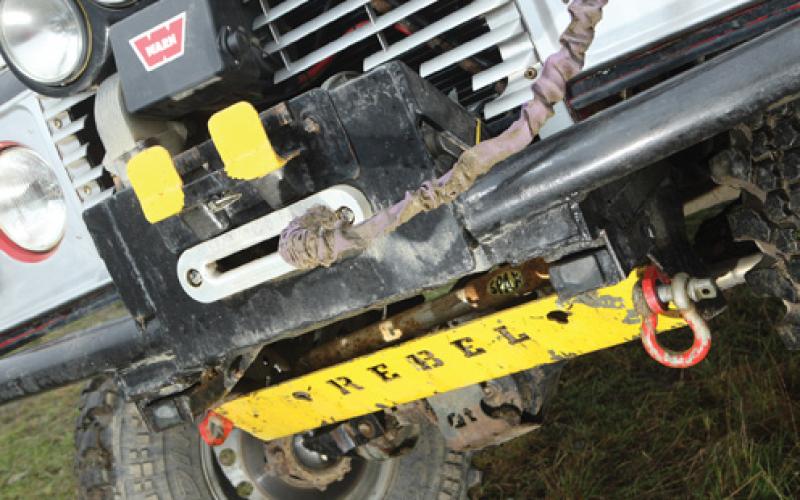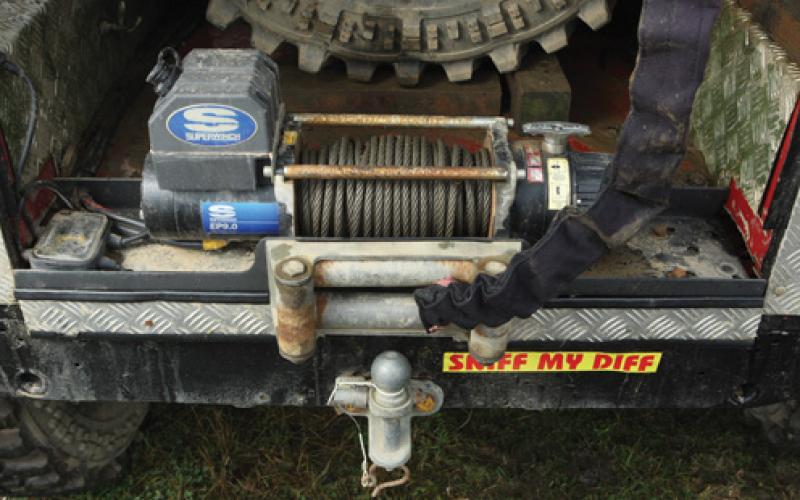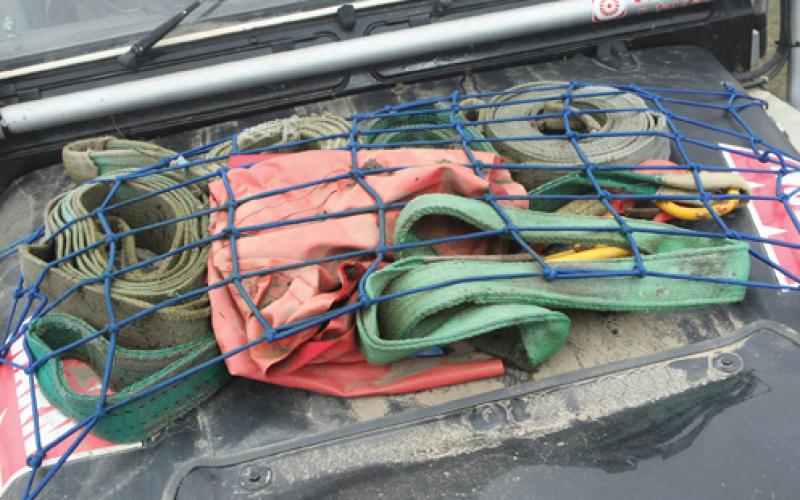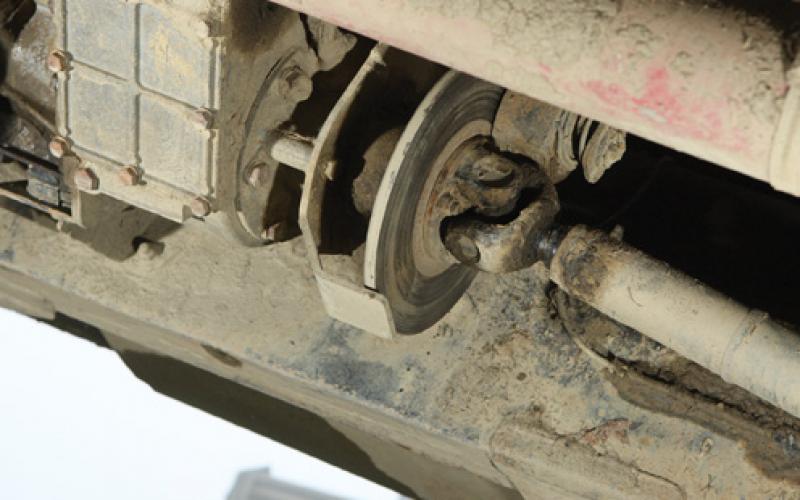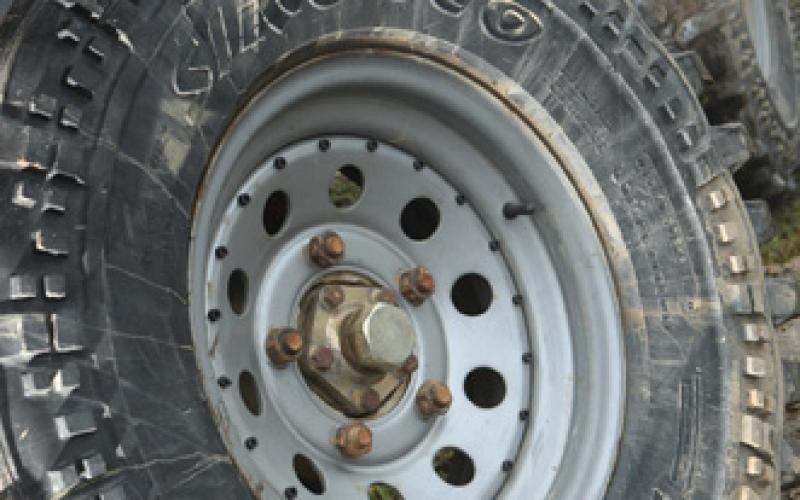Roll With It
When Brian Crabtree bought a comprehensively rolled 90 as an insurance write-off, he thought it would be an easy job to rebuild it for the road. It wasn’t – so he decided to turn it into something altogether more interesting…
‘This,’ as the advert used to say, ‘is an original.’ Not that it looks much like it once did, but in one very significant way, Brian Crabtree’s Land Rover 90 is just the same as when it left the factory.
There are plenty of V8 90s in the world, of course. But most of them started life as 2.5s of one form or another, and the V8s themselves normally first saw service under the bonnet of a long-since deceased SD1 or Range Rover.
Brian’s, on the other hand, is that rarest of things, a bona fide Land Rover 90 V8. But no need to start putting calls in to Gaydon. The engine might be original – but that’s about as far as it goes.
The 90 dates from 1989, just before the Defender name was introduced. Brian bought it a few years back, by which time it had already been modified, in a manner of speaking, by its previous owner – who appended a new free-form look to its bodywork by rolling it into a ball of scrap.
At that stage, Brian’s intention was to rebuild the written-off 90, which was the County Station Wagon model, and use it as a road car. ‘But the roof was that badly bent it wouldn’t straighten,’ recalls Brian. ‘So I cut it down and made it into what it’s like now.’
What it’s like now. Let’s talk about that. The chassis is pretty much untouched, aside from the addition of mounting points for an additional set of rear shocks, and the gearbox is original (an LT77 or Santana, he’s not sure which, though he says it does whine a lot in third and that might point towards the latter). Over and above that, however…
Even the engine, despite being an original V8, isn’t unmolested. Brian has converted it to LPG, so it runs with its timing well advanced, and it’s been tuned down to deliver better torque at a lower compression ratio. ‘The LPG is to keep it as green as possible,’ he says, ‘to keep the eco-friendly ramblers happy…’ Not just because it’s cheaper, then? ‘That as well…’
Behind the gearbox is an R380 transfer case (the one part of the R380 transmission that wasn’t famous for breaking every time there was a Y in the day), to which Brian bolted on an early-model X-Brake.
‘It was one of the first X-Eng sold,’ he says. ‘They’ve got ribs on them now, but ours is just a flat plate, and we’ve had to straighten it a few times – if you come down hard with it on a tree stump, it tends to modify it! But it’s a fantastic piece of kit, you can go through all the slime and everything, and then you can hang the vehicle on the handbrake, no problem.’
Standard props, whose yokes have been opened out for more clearance at high angles, lead to 90 front and Discovery rear axles. The latter was added for its disc brakes, Brian’s condign verdict on the drums with which 90s were still fitted in the pre-Defener era being: ‘They’re crap.’
Best not ask him what he thinks of Discovery halfshafts, then. ‘I’ve only ever snapped two,’ he says. ‘When I fitted the Disco axle, I ran it with the original halfshafts in, because I thought it was daft taking them out, and they only lasted a day!’
Not being one to mess around, he didn’t waste time putting in any calls to Genuine Parts. Instead… well, what do you think the odds might be of finding the word ‘Ashcroft’ in this sentence. The company’s shafts now take the strain in both axles, along with a set of Disco diffs with ARB lockers.
The front axle, by the way, is a 90 unit. The third 90 unit, in actual fact, that the vehicle has been through, thanks to heavy landings on boulders. At the business end is a pair of 110 CV joints, which Brian reckons are as good as the heavy-duty aftermarket alternative ‘if you use your head rather than your boot.’
Talking of boots, the drivetrain finally reaches terra firma (actually, it’s not always all that firma, but anyway) via a set of 35x10.50R16 Fedima Siroccos. Brian used to use a combination of Grizzly-Claws for off-roading and BFGoodrich Trac-Edges for the road, but now he’s an absolute convert to the Portuguese remoulds.
‘I’m not joking, they do take some beating. They’re two and a half years old, they’re used on and off-road, they’ve done several thousand miles and they’re wearing very well. As regards a road tyre, they really grip, even in what counts as high-speed cornering by Land Rover standards.
‘I take them down to 15psi for off-roading, sometimes lower, and beadlocks are a bit out of my price range at this moment in time, so I’ve knocked them off the rim a few times. I think that’s because they’ve a harder wall than a Simex, as they’re built on to a truck case. But they do just as good a job – the only difference is that they’re remoulds. The only thing they’re not very good in is snow, as you’ve got to let the pressures right down, but other than that they’re a fantastic tyre – I’ll never hear a bad word against them!’
Creating the space for the big tyres is a surprisingly modest two-inch suspension lift, which was one of the first mods Brian added after sorting out the 90’s crumpled roof. This uses Pro-Comp bushes all round; a standard A-frame ball joint is retained for now, though don’t be surprised if it’s replaced by a rose joint in the future.
One thing you won’t be seeing on this 90, however, is dislocating suspension. Brian bent the standard rear radius arms by three degrees and reinforced them underneath with angle iron, but that’s as far as he’s taking it: ‘I can’t see the point. If you’re running a standard diff, or a Detroit or limited-slip, there’s a possibility. But if you’ve got your axle down that far, and it takes up drive, it’ll just grip and it’ll wrap the arm underneath. I’ve seen it happen so often.’
Less controversial are his views on the pair of Dan bars he got from Protection and Performance to replace the 90’s standard drag link and track rod. ‘Nobody can beat the price,’ he says, simply, and the same goes for the Rebel 4x4 steering guard he picked up for a mere £45. ‘I did need to modify it to get the drop on the axle, as the steering arm was fouling it slightly, but as regards strength and hitting rocks and what not, I’ve not seen one to beat it.’
Something else he raves about is the Superwinch EP9 on the back of the vehicle. ‘It’s an absolutely fantastic piece of kit. It’s nowhere near as fast as the 8274 I’ve got on the front, but that thing has dragged vehicles everywhere. It’s unbelievable. It has an external cone brake which stops the drum from overheating, so its lowering capabilities are fantastic. The only drawback is that as you’re lowering, if you have to stop to re-rig or check your wheels, you’ve got to winch back in to release the brake before you start winching out again. That’s a good safety feature – though it can be a bit of a pain!’
Providing the power here is a 100-amp Range Rover alternator mated to two Optima Yellow-Tops. These are wired in parallel, which in Brian’s view obviates the need for split-charging, though that will change in the future as his intention is to install a third winch. ‘I’ll have to go for a primary battery, which will be an Optima Red-Top, for the engine, with the two Yellow-Tops for the ancillaries. Then I’ll probably have to put in a split-charge or a second alternator, with a standard 65-amp alternator to run the engine and the 100-amp for the ancillaries – if you’re using two winches at once, which does happen, you need that extra power.’
The winches sit on bumpers which Brian made himself using bits of metal rescued from other people’s scrap bins. The front one is in two-inch tube with a 4mm wall, combined with 4mm and 5mm plate and mounted on a U-section girder which is bolted to the chassis. ‘The thing you’ve got to watch when making a bumper is how far back you’re going to put it for your approach angle. Also, you get people cutting great big lumps of wing off; alright, you’ve got to cut a certain amount away, but you’ve got to remember that the bumper has to be a certain distance from your lights so it doesn’t deflect the beam. You end up making it with one hand and having the MOT book in the other!’
Unlike the bumpers, the roll cage was made from new tubing, all of it seamless. It’s built in two pieces, allowing the back to be removed for access to the tub while the front remains in place.
This is the bit that does most of the work, as it’s here that four of the structure’s six pick-up points are found. All are on the rock sliders, which Brian made from 4x2 box; the back section braces this part of the cage by mounting to the rear bumper.
‘I got the MSA and RAC books,’ says Brian. ‘It basically looks the same, but they have different ideas. I looked at them and took the best ideas from both. I was going to put a cross on the back, but I was told that as long as the driver’s side is supported, I had no need to put the other one on. I do still want to put a full cross inside, though. Then in my own mind I’ll feel a lot safer – though the idea is not to roll it, and if you do roll it to roll it as slow as possible!’
Chosen specifically to fit the cage is the stainless steel snorkel, which Brian discovered at the Donington show a couple of years ago. ‘There was this chap, I don’t know his name, he had all sorts of stuff for sale. But he had one of these, too, and he also made ram air vents for your heater. It was just what I was looking for, because it runs inside the cage rather than outside or above it. I bought it then and there, not really knowing if it was going to fit, but a few alterations here and there and it works perfectly.
‘The only problem is that you’re not supposed to run snorkels with LPG. The LPG mixer uses restrictors, and if you get air going in at high velocity, it alters the flow and can cause a misfire. When you’re running in windy weather, it can actually turn the engine off altogether. I have a way of getting round this where I take the pipe off – I have another K&N on a shorter pipe and it stays under the bonnet. It works for things like playdays, but you have to keep it out of the water or it’ll take one sniff and want to go the other way.’
Considering this is a challenge vehicle, indeed, and one which has taken more than its fair share of beating, Brian is remarkably canny about what he does and doesn’t do with it. Bog holes, for example, are more bother than they’re worth: ‘she can do it, but it silts up the radiator. Then it starts overheating, and you’ve ruined your day.’
Similar caution is behind the rev counter on the dash, which has a Max Power look to it but is there for a less exotic reason. ‘Sometimes when you’re wallowing in the crap and you’re giving it everything, you’ve to be a bit careful. I do keep my eye on how far she’s revving.’
Brian even describes his decision to fit NAS style lamps as ‘a bit silly really, because I’ll just end up breaking them!’ His rationale here is that ‘I’m pretty good at backing into trees…’ A less complex choice was to stick with Defender seats: ‘You do slide about a bit, but at £200-plus each for a pair of buckets…’
As this demonstrates, while Brian’s 90 is a vehicle that would cost a fortune to build if you were paying someone else to do the work, it’s a classic example of how far you can go on your own driveway while still watching the pennies. He’s currently got a cross-bolted 4.6 V8 waiting to go in, and is debating whether to mate it to a Torqueflite box or later four-speed ZF auto: ‘The position I’m in as a normal person,’ he says, ’is that whatever you decide to do, you’ve got to get it right first time, because you can’t afford to be making mistakes.
‘There’s a lot of things you don’t really need to buy,’ he continues, ‘which are basically logical to make. I’m not trying to knock the people out there who charge money for things, it just adds to the fun. I have more fun building vehicles… I have fun using them, but there’s more fun building things, thinking about them, designing and testing them.
‘The idea is to overcome nature. Nature puts a challenge in front of you, and the challenge is to beat it. Which is virtually impossible – but it’s good fun trying.’



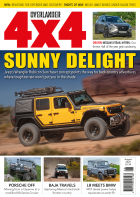
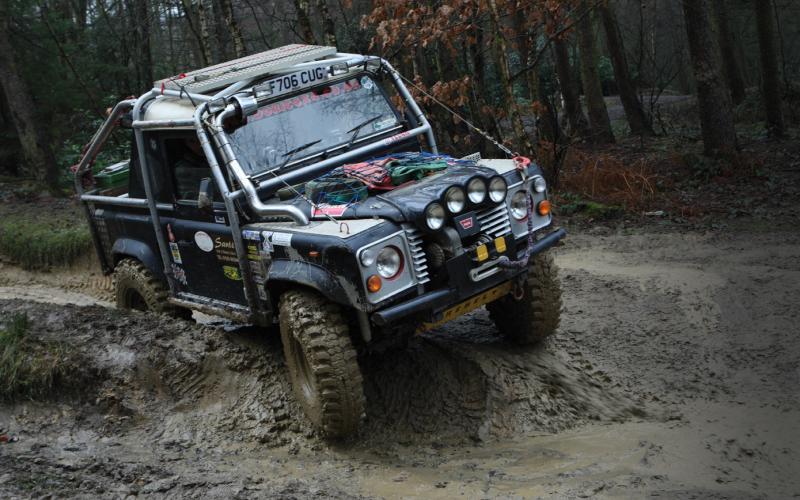
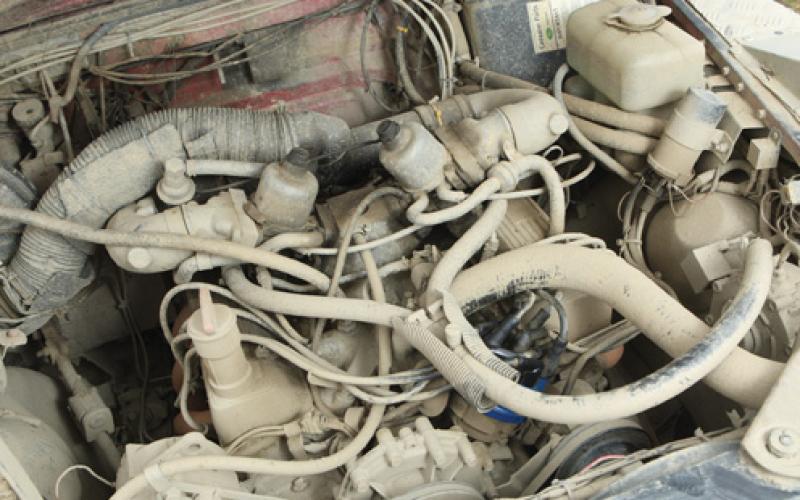
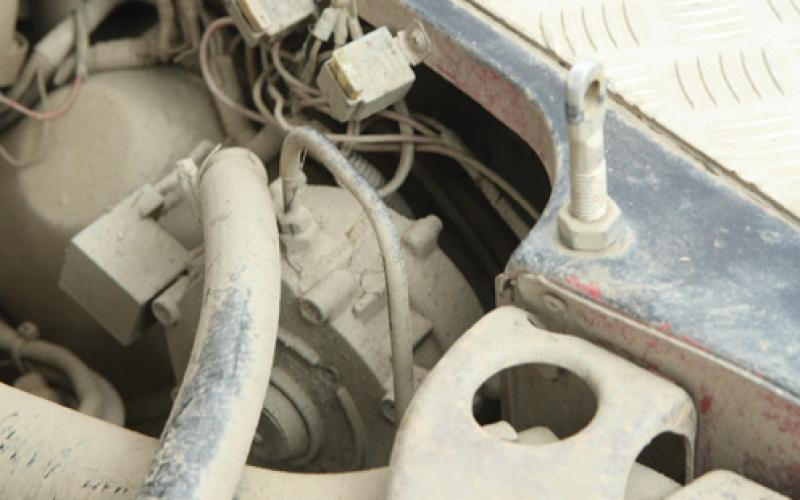
![3] Captive engine mounts replaced the rubber originals after they fell victim to one shuddering blow too many](/assets/bulkUpload/_resampled/CroppedImage800500-9008-017.jpg)
